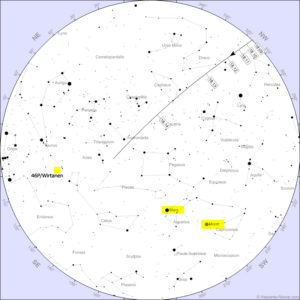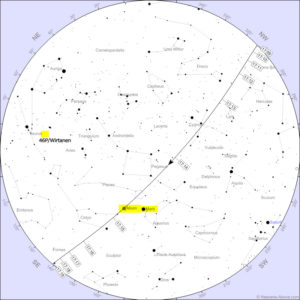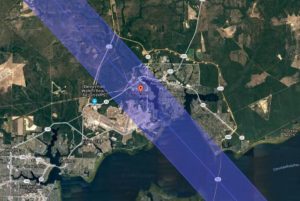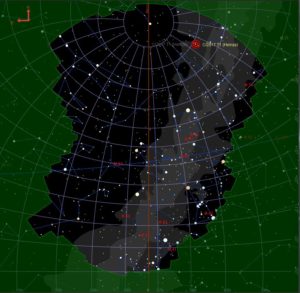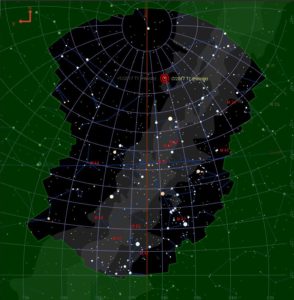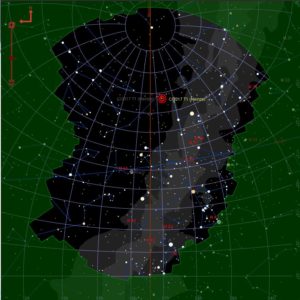For the past two weeks I have been preparing for the new science camera. It uses different cabling and doesn’t use water to assist the cooling. So I had to dismount the scope and disassemble the mount to remove the old cabling and the water plumbing. I then installed the new control cables and took the opportunity to upgrade one of the USB hubs and cabling to USB3 for the planetary camera. Then everything was put back together and the scope remounted.
The final part of the new science camera system arrived yesterday (the 21st). I took the filters out of the old filter wheel and installed them in the new one. The new filter wheel only holds 8 filters so I had to choose which two will go into storage. The next step was to mount the filter wheel on the camera and mount to the scope. The new software was tested yesterday afternoon and there was no apparent problems.
Just after midnight the skies started to clear so I powered everything up and took a shot at a random spot in the sky. A couple of jogs to the focuser brought the image somewhat close to focus. So, here is the new camera’s first light image.
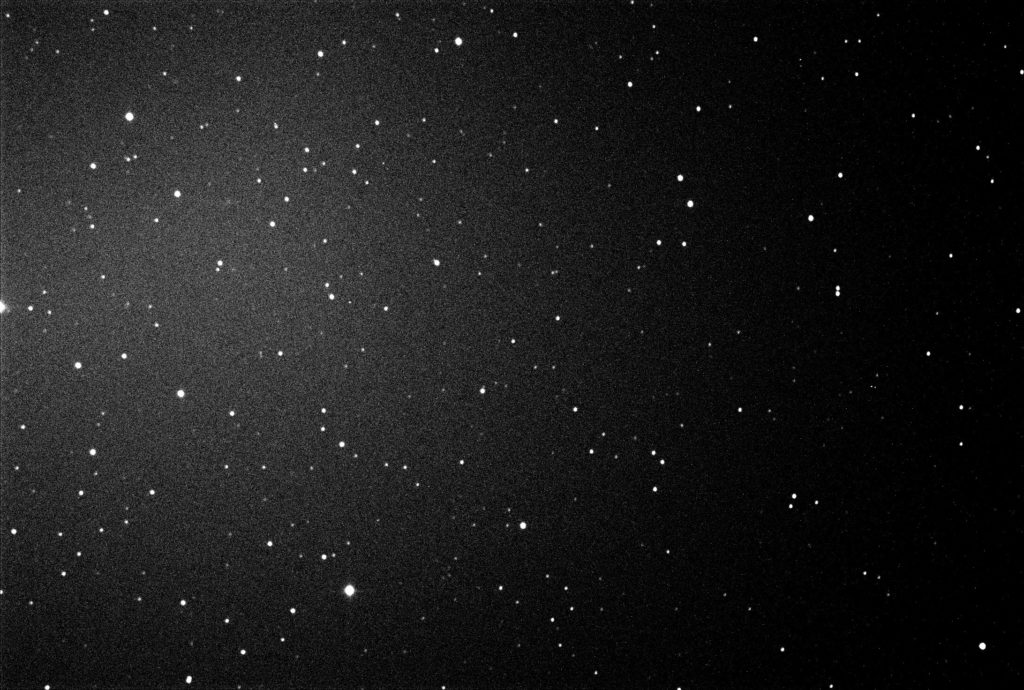
This image has no processing, is manually focused, the scope is out of collimation and some lights were still on in the dome room. But it was good enough to tempt me to take a look at a brightening comet.
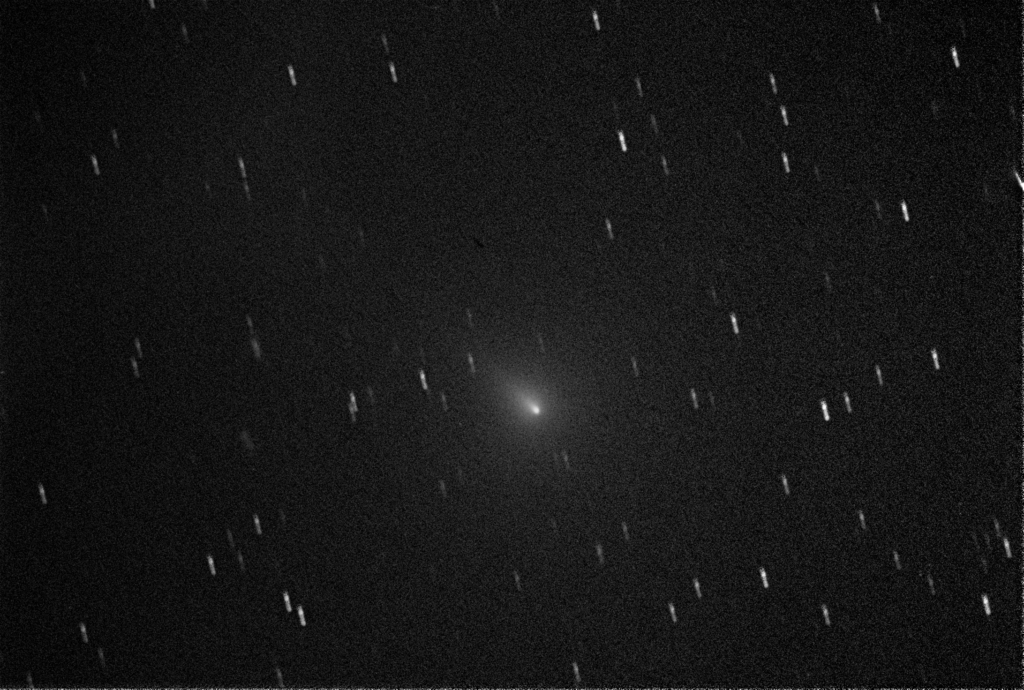
This is comet C/2019 Y4 (ATLAS). The comet is currently inbound, above the plane of the solar system and has just crossed the orbit of Mars.
The image is a stack of fifteen 60 second exposures registered to the comet. There were high thin clouds passing and that can be seen in the star streaks and the mottled background. But it is enough to prove the system works and that the PTO is getting close to being back in operation.
